
MUMC has multiple platforms for targeted and non-targeted small molecule/metabolite analyses. These include an Agilent 6890N Gas chromatography (GC) coupled to a 5973N mass selective detector, 7890 GC interfaced with 7200B quadrupole time of flight mass spectrometer (GC-QTof MS), Bruker Impact II Q-Tof MS coupled to Waters Acquity ultrahigh performance liquid chromatography (UPLC).
Agilent 7890 GC-QTof MS
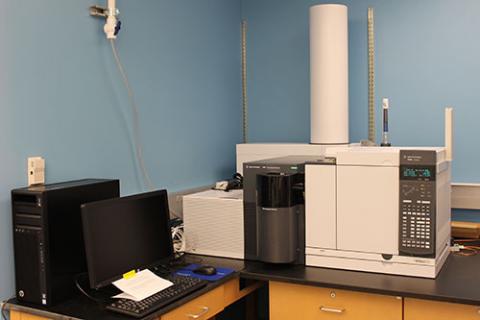
The Agilent 7890 gas chromatography (GC) interfaced with 7200B quadrupole time of flight mass spectrometer (GC-QTof MS) offers outstanding high resolution and mass accuracy. It is ideal for trace-level identification of unknown compounds as well as quantification in complex matrix. Fast scan speed and accurate mass facilitate deconvolution of coeluting GC peaks that are inseparable by low resolution MS. Scan rates up to 50 Hz allow even the narrowest chromatographic peaks to be quantified with full scan spectra. The Gerstel MultiPurposeSampler (MPS2) also allows for analysis of volatile compounds via solid-phase microextraction (SPME). Typical application of the Agilent 7890 GC -7200B QTof MS includes targeted and non-targeted metabolic profiling, molecular weight determination, and identification of unknown with MS/MS.
Agilent 6890N (GC)
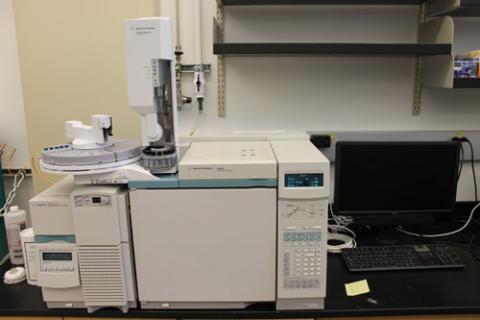
The Agilent 6890N gas chromatography (GC) coupled to a 5973N mass selective detector (MSD) is known for its reliability and ruggedness. The comprehensive EI mass spectral library available for GC-MSD makes it the choice of platform for both targeted and non-targeted metabolic profiling when one does not know what metabolites to look at or wants to assess the global metabolic change. It is also routinely used for volatile compound, lignin composition, and wax analysis.
Bruker Impact II Q-Tof MS
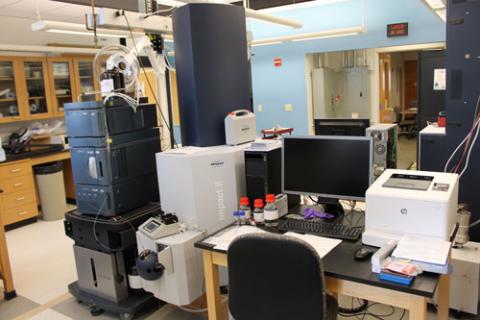
The Bruker Impact II QTof MS coupled to Waters Acquity ultrahigh performance liquid chromatography (UPLC) offers excellent resolution and mass accuracy. Impact II is the latest innovation in Bruker’s unique UHR-QqTOF (Ultra-High Resolution Qq-Time-Of-Flight) mass spectrometry product line with industry-leading > 50,000 Full-Sensitivity Resolution (FSR). It is ideal for a variety of applications including drug metabolite, degradant and impurity identification and quantification, natural product identification, compound verification. It is also used for both targeted and non-targeted metabolic profiling.
Spark Prospekt2 LC-SPE System
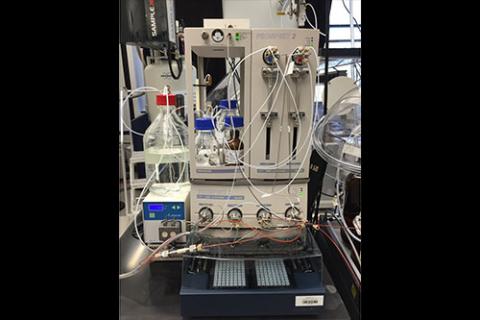
Spark Prospekt2 LC-SPE (Solid Phase Extraction) system is used to trap peaks eluting from chromatographic separation and subsequently transfer them to NMR tubes with deuterated solvents after drying with nitrogen gas. It greatly facilitates isolation and purification of unknown compounds from complex sample mixture for structural elucidation of unknown metabolites.
Bruker Autoflex Speed MALDI TOF MS
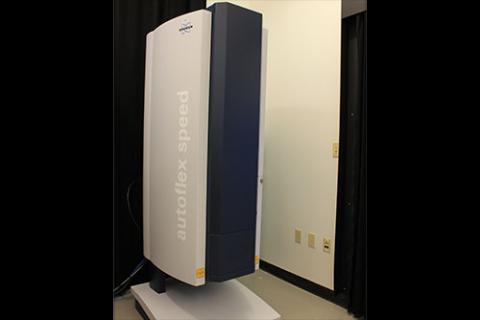
The Bruker Autoflex Speed MALDI (Matrix-Assisted Laser Desorption Ionization) TOF (Time of Flight) mass spectrometer offers a wide range of mass range (m/z > 300,000 in linear mode, m/z > 20,000 in reflectron mode) with good mass accuracy (< 10 ppm in reflectron mode and <100 ppm in linear mode). It can be used for small molecule, polymer, lipid and glucan analysis, and molecular imaging.
ThermoScientific iCAP-TQ ICP-MS
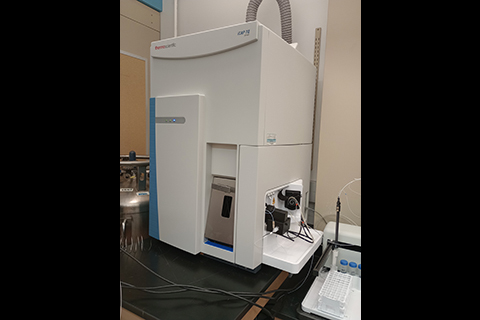
This inductively coupled plasma (ICP) triple quadrupole (TQ) mass spectrometer (MS) enables the quantification of most elements and metals in samples. ICP-MS is known for its ability to detect metals in liquid samples at very low concentrations. It can detect different isotopes of the same element, which makes it a versatile tool in isotopic labeling. The instrument can be run in single quadrupole mode or triple quadrupole mode with a reaction gas. This enables the highest sensitivity and accuracy.